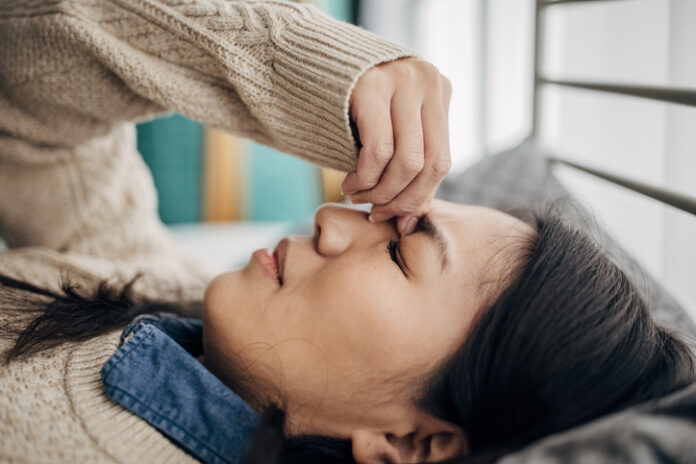
A recent analysis conducted by researchers at Georgetown University Medical Center says that one-third of 20 million women who answered a national health survey experienced migraines associated with menstruation and more than half (52.5%) were premenopausal. The findings, which will be presented Tuesday at the American Academy of Neurology 2024 Annual Meeting, shed light on the impact of menstrual migraines on women’s lives and points to the need for understanding which groups of women could most benefit from improved treatment strategies.
“The first step in helping a woman with menstrual migraine is making a diagnosis; the second part is prescribing a treatment; and the third part is finding treatments patients are satisfied with and remain on to reduce disability and improve quality of life,” says the study author, Jessica Ailani, MD, professor of clinical neurology at Georgetown University School of Medicine and director of the MedStar Georgetown Headache Center at Medstar Georgetown University Hospital.
For their study the researchers used data from the 2021 U.S. National Health and Wellness Survey, which was organized by the National Center for Health Statistics. It analyzed responses of women on the frequency of their migraines, disabilities, and current migraine treatments via a five-question survey called the Migraine Disability Assessment Test (MIDAS).
Ailani noted that discrepancies of who gets migraines associated with menstruation is likely due to premenopausal women having more regular menstrual cycle resulting in more menstrual-related attacks. Additionally, as women move into their 40’s and become peri-menopausal, there tends to be a greater shift through the month in hormone levels also leading to frequent migraine attacks,” she said.
The survey data revealed that for all women during their menstrual periods, migraines occurred as frequently as 4.5 times and that monthly only migraines lasted an average of 8.4 days. Of those with migraines, 56.2% reported moderate-to-severe disabilities related to migraines, that ranked highest on the MIDAS scale.
For treatment of their migraines, 42.4% reported the use of over-the-counter medications, while 48.6 turned to prescription medications to manage symptoms. The most common class of medications used by the 63.9% of women with acute symptoms were triptans, which were developed nearly 30 years ago to calm overactive nerves associated with migraines and cluster headaches.
The data also revealed that only 21.1% of women reported using any form of preventative medications or therapies for migraines.
“Preventive treatments are used less frequently than acute treatment for migraine,” Ailani said. “In my opinion, this is because preventive therapy is a long-term commitment by both a woman and her clinician to improving the disease process. Migraine is a life-long brain disease without a cure, and the goal of preventive therapy is to reduce disease burden and improve quality of life. Unfortunately, newer disease-specific treatments are costly, so generic older treatments are often used and come with greater side effects.”
Follow up research suggested by the team’s findings would be to examine even larger datasets to see if the results are similar on a global scale. Specifically, the researchers would like to discover whether women with migraines related to menstruation are frequently using non-migraine treatments, which was observed in the National Center for Health Statistics data.
“As a headache specialist in the U.S., I know I can do better for women in my clinic, but what can be done for the millions of women who don’t get into a headache clinic? That is our true next step,” concluded Ailani. “If you have migraines related to your menstrual cycle, discuss this with your gynecologist or neurologist. There are treatments that can help and if the first treatment tried does not work, do not give up.”













